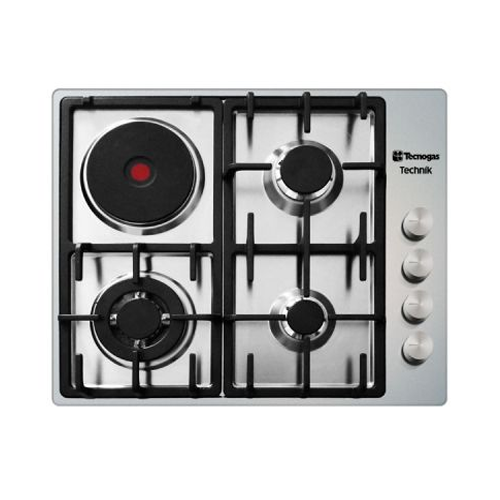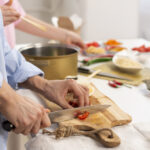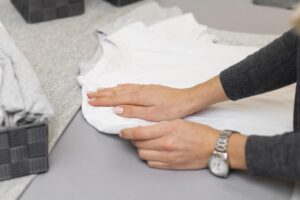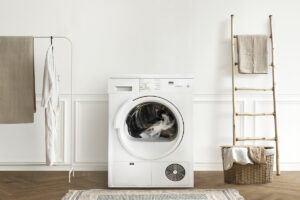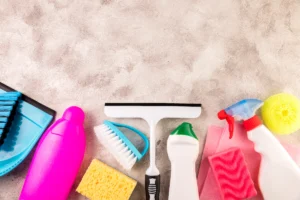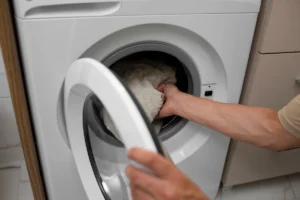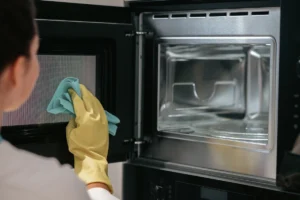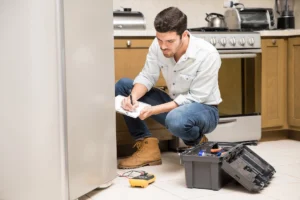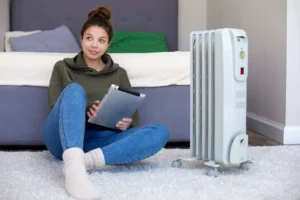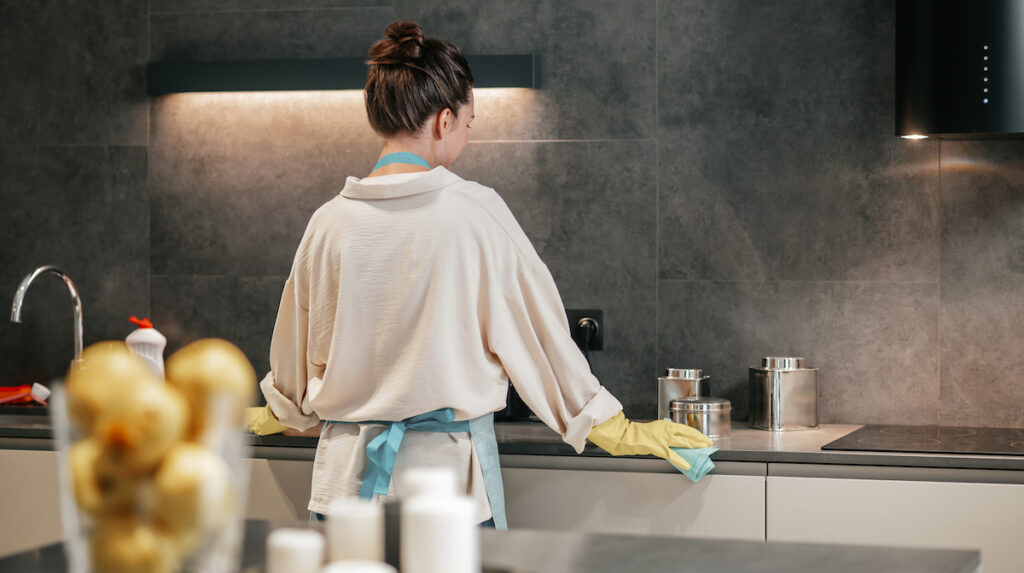
How to Make After-Cooking Cleanup Easier
Many people enjoy cooking and trying out new recipes that may include frying, sautéing, and steaming. But sometimes, the process of making something delicious can leave a mess in your kitchen. It’s not uncommon to have vegetable peels, spilled sauces, and food crumbs filling up your kitchen workspace. Even if you cook simple meals, you might splash sauces on the wall behind your stove and get splatters of grease on the stovetop. If these messes are left to sit, it can take hours of scrubbing to completely get rid of the buildup. Fortunately, your cooking sessions don’t have to be followed by a cleaning nightmare. You can make cleanup quick and easy with some good kitchen habits and prior planning. Here are some tips to make your after-cooking cleanup easier:
Keep Burners Clean
When cooking on a gas range, watch out for food splatters that may get into the burners. The pores where the flames come out can get clogged and interfere with the burner’s ability to heat up your food. Also, they can become kitchen hazards if the flame comes into contact with grease.
Allow the burners to cool after cooking, then inspect them for blockages. Keep them clean by spraying a solution of soap and water on the burners. Let it soak for 20 minutes, and then gently scrub off any particles using a soft brush. Use a clean rag to wipe it dry.
If your stove has several burners and not all are in use, you can protect the other burners from your cooking by covering them. Place some foil or an upside-down baking sheet on the unused burners to keep them clean and reduce your after-cooking cleanup.
Cover Pots and Pans While Cooking
If a recipe requires you to steam or simmer food, cover the pot you’re using. It will help trap the water droplets and keep the contents from splattering on the surrounding areas. When you remove the lid, carefully lift it to manage the food splatters that may escape and use a kitchen towel to catch any drips.
When you’re frying food, use a splatter screen to minimize the amount of oil that splatters out of the pan. A splatter screen is usually made of a wire mesh cover that fits over the top of a pan. This design allows air to circulate while preventing the oil from splashing out. Aside from keeping your stovetop and nearby areas free from oil, the splatter guard can also protect you from getting oil burns while cooking.
Install a Backsplash or Use Splatter Shields
Grease, water, and food residue can easily ruin your kitchen walls and cause unsightly stains. To prevent this, most homeowners install a backsplash to protect kitchen walls and make messes easier to clean. Tile is most commonly used as it is resistant to heat and moisture, and you can simply wipe it down with a damp rag.
If you don’t have a backsplash or the budget to install one, you can keep the areas surrounding your stove clean by using a splatter shield. This three- or four-sided panel standing screen is placed directly behind and around your stove, or a smaller one can be used to fit around a single pan while cooking. The splatter shield restricts messes within its area, so cleanup is easier. The splatter shield can stand on its own, but if it feels too restrictive or you prefer a setup that is more stable, there are self-adhesive designs that come in large sheets. You can attach these directly to your kitchen wall, wipe them clean after cooking, and replace them with new ones when they get too dirty.
Clean Up Immediately
Once grease and sauces set on a surface, they can become harder to remove later on. If you don’t want to spend hours scrubbing oil and food buildup from your kitchen, clean them up immediately. Wait until your stovetop is completely cool before wiping spills with a sponge and soapy water. Do the same process for your backsplash and any nearby appliances that may have been affected. Wipe them dry when you’re done up.
If you have a glass stovetop, clean it using a water and dish soap solution and a microfiber towel. Submerge the cloth in the soapy mixture and wring out the excess water. Use this to clean up the stovetop. You can also use a non-abrasive scrubbing pad for more caked-on areas, as long as the tool doesn’t leave scratches on the glass. Finish it off by drying the stovetop with a clean cloth.
Use Different Kinds of Cleaners
If the surface is too greasy or stained for soap and water to clean, use alternative cleaners. For example, a paste made of white vinegar and baking soda is very effective for cleaning most messes. White vinegar is acidic and helps loosen up stains so they can come off easily. On the other hand, baking soda can gently scrub off residue without harming the surface you’re cleaning, so it’s also safe to use on glass stove tops.
Cleaning up grease and food spills in the kitchen doesn’t have to be a tedious task. You can accomplish the chore quickly using any of these recommendations. With good kitchen habits and by investing in the right tools, you can make any after-cooking cleaning a breeze.
Related Products
- Sold Out20% Off
 [wc-ps tag="span"]Compare
[wc-ps tag="span"]Compare- Flame failure device on oven
- Oven lamp
- Pulse Ignition
- Normal 2 layer glass oven door
- Body Material: SPCC (silver coated)
- Top Material: SUS430
- Piso per Fry- only P1 of LPG consumed in 15 minutes of cooking
- 4456 Ampheres
- 2500 watts
Original price was: ₱14,295.00.₱11,400.00Current price is: ₱11,400.00. - Sold Out16% Off
 [wc-ps tag="span"]Compare
[wc-ps tag="span"]Compare- 4 Gas Burner
- 1 Gas Oven Burner
- Big Oven Capacity
- Tempered Glass Cover
- Blue Flame
Original price was: ₱13,998.00.₱11,800.00Current price is: ₱11,800.00. - Sold Out10% Off
 [wc-ps tag="span"]Compare
[wc-ps tag="span"]Compare- 60 cm Stainless Steel Hob
- 3 Gas Burners + 1 Fast Heating Electric Hot Plate
- Cast Iron Pan Support with Wok Stand
- Safety Valves
- Electric One-Touch Ignition
- Mechanical Control
- 7.4 kW Total Power
- Stainless Steel 304
- Dimension (w:d) 600 : 510 mm
Original price was: ₱14,995.00.₱13,500.00Current price is: ₱13,500.00.



